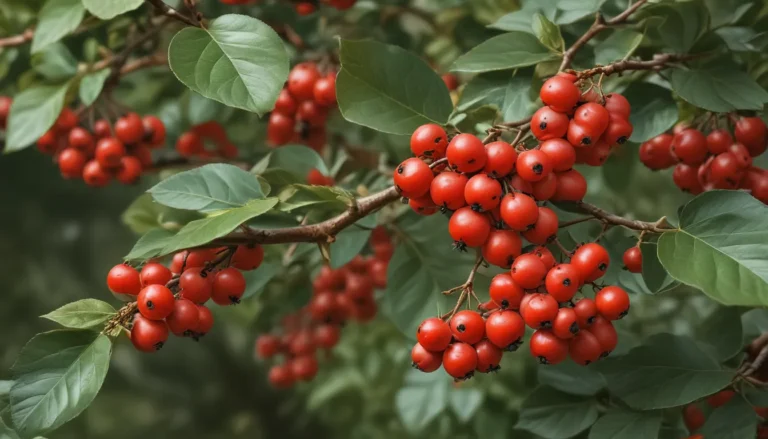The pictures we use in our articles might not show exactly what the words say. We choose these pictures to make you interested in reading more. The pictures work together with the words but don’t take their place. The words still tell you the important facts.
Welcome to a journey into the world of the remarkable resurrection fern. These resilient plants, belonging to the Polypodiaceae family, are a true testament to the wonders of the natural world. With the ability to revive themselves after appearing completely dried out, these ferns have captured the interest of botanists, nature enthusiasts, and artists alike. In this article, we will explore 18 captivating facts about resurrection ferns, shedding light on their characteristics, life cycle, ecological significance, and more. Join us as we uncover the secrets of these remarkable plants and gain a deeper appreciation for the resilience and beauty of nature.
Key Takeaways:
- Resurrection ferns, found in the southeastern United States, symbolize endurance and renewal in the face of adversity, inspiring poets and artists alike.
- These ferns play a crucial role in their ecosystems, providing habitat for various organisms and contributing to soil health.
- Resilient to pests and diseases, resurrection ferns are subject to conservation efforts and scientific research, showcasing nature’s resilience.
The Resilient Polypodiaceae Family
Resurrection ferns are a part of the diverse Polypodiaceae family, which includes over 75 genera and 1,000 species of ferns. Known for their wide distribution and varied ecological roles, these ferns are true survivors in the plant kingdom.
The Epiphytic Wonders
Resurrection ferns are epiphytes, meaning they grow on the surface of other plants without being parasitic. Forming a symbiotic relationship with their host, they obtain nutrients from the air and debris around them, showcasing their adaptability in diverse environments.
Survivors of Desiccation
One of the most remarkable traits of resurrection ferns is their ability to withstand extreme dehydration. During dry periods, they curl up and appear brown and lifeless, only to quickly revive back to their lush green appearance when exposed to moisture, a true miracle of nature.
Exploring the Southeastern United States
The southeastern United States is home to these fascinating ferns, particularly thriving in regions with high humidity and abundant rainfall. From forests to swamps and coastal areas, resurrection ferns find their niche in diverse ecosystems.
The Healing Powers
Traditionally, certain indigenous communities have used resurrection ferns for their medicinal properties. Believed to have healing powers, these ferns were utilized in various remedies, showcasing the deep-rooted connection between humans and nature.
Inspiring Endurance
The unique resilience of resurrection ferns has inspired poets, writers, and artists alike, serving as a symbol of endurance and renewal in the face of adversity. Their ability to revive and thrive under adverse conditions is a testament to the beauty of nature's survival strategies.
Longevity in Life
Resurrection ferns boast a remarkable lifespan, with some specimens living for several decades under favorable conditions. Their ability to endure harsh environmental conditions contributes to their longevity, a true marvel of nature's resilience.
The Air Purifiers
Playing a vital role in purifying the air, resurrection ferns absorb pollutants and release oxygen, contributing to the overall health of their surrounding ecosystems. Their presence is not just visually appealing but also beneficial for environmental well-being.
The Reproduction Cycle
Like other ferns, resurrection ferns reproduce through spores produced in small structures on the undersides of their fronds. These tiny spores disperse and germinate to give rise to new ferns, continuing the cycle of life.
Resilience to Pests and Diseases
With natural defenses that make them resilient to common pests and diseases, resurrection ferns thrive without the need for chemical interventions. Their ability to resist threats highlights their adaptability and strength in the face of challenges.
Ornamental Beauties
Due to their unique characteristics and visual appeal, resurrection ferns are often cultivated as ornamental plants in gardens and landscapes. Adding a touch of natural beauty, these ferns bring a sense of tranquility and connection to the outdoors.
Cultural Significance
In various cultures, resurrection ferns hold cultural significance and are associated with stories, folklore, and traditional practices. Symbolizing endurance and the cyclical nature of life, these ferns have woven themselves into the fabric of human history.
Ecological Guardians
Resurrection ferns play a crucial role in their ecosystems by providing habitat for various organisms, contributing to soil health, and participating in nutrient cycling processes. Their presence is essential for maintaining the delicate balance of nature.
Sensitivity to Environment
Resurrection ferns exhibit sensitivity to changes in light and moisture levels, responding to environmental cues by adjusting their physiological processes and appearance. Their ability to adapt to environmental fluctuations showcases their remarkable resilience.
An Adaptation Marvel
Thriving in a range of climates, from humid subtropical regions to drier, arid environments, resurrection ferns display their remarkable ability to adapt and thrive in diverse settings. Their resilience to variable conditions underscores their adaptability in the face of changing environments.
Conservation Efforts
Due to their ecological importance and cultural value, resurrection ferns are the focus of conservation efforts aimed at preserving their natural habitats and ensuring their continued existence. Protecting these plants is essential for maintaining biodiversity and ecosystem health.
Scientific Insights
Resurrection ferns have captured the interest of scientists and researchers studying their unique physiological adaptations, genetic makeup, and ecological interactions. By delving into the mysteries of these resilient plants, researchers contribute to our understanding of plant resilience and survival strategies.
Nature’s Resilience
The existence of resurrection ferns serves as a testament to nature’s resilience and the extraordinary ways in which living organisms adapt to environmental challenges. Embodying the spirit of renewal and perseverance, these ferns inspire awe and appreciation for the wonders of the natural world.
In conclusion, the resilience and adaptability of resurrection ferns offer valuable insights into the intricate workings of nature. Their ability to endure and thrive in diverse conditions highlights the importance of preserving the rich tapestry of plant species that contribute to the beauty and sustainability of our planet. As we continue to explore and appreciate the wonders of the natural world, let the resurrection fern remind us of the remarkable survival strategies that have evolved over millions of years.
FAQs
What is the significance of the name "resurrection fern"?
The name "resurrection fern" stems from the plant's remarkable ability to revive and become green again after being completely dried out. This resurrection ability has captivated many and inspired the plant's name.
Where can the resurrection fern typically be found?
Resurrection ferns are often found in humid, shady environments, typically growing on the branches of large trees or in wooded areas. Their preference for moisture and shade contributes to their unique ecological niche.
Conclusion
Through their resilience, adaptability, and unique survival strategies, resurrection ferns stand as a testament to the wonders of the natural world. As we marvel at their ability to thrive under adverse conditions, let us celebrate and protect these remarkable plants that contribute to the diversity and beauty of our ecosystems. Join us in exploring the intricate world of the resurrection fern and gain a deeper appreciation for the interconnectedness of all living organisms in nature.






